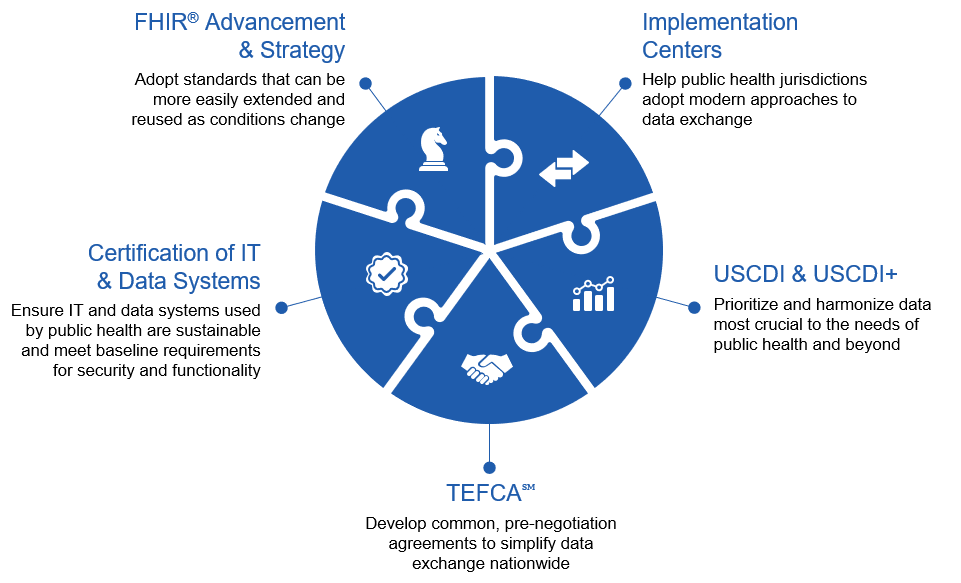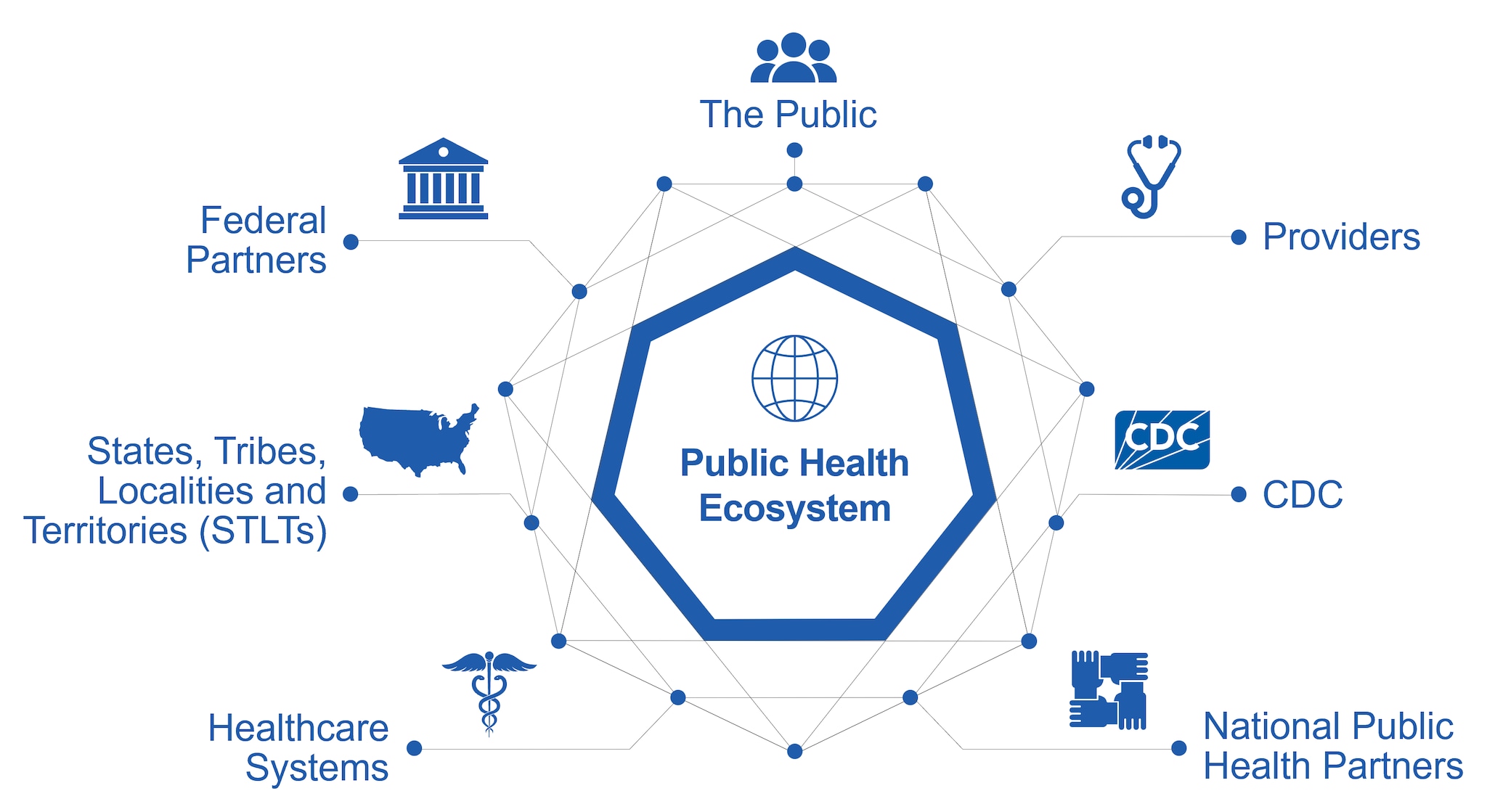At a glance
- Interoperability means that data systems at every level are required “to speak the same or similar language.”
- When we make clinical data and public health data work together better, it will be easier for information to move between them.

Challenge
Sharing of public health data is currently challenging for many reasons. Many public health data systems rely on outdated technologies that don’t work well with other systems. Additionally, they rely on data that is not organized in a standard way and use data sharing policies and agreements that aren’t flexible. This has greatly hindered healthcare and public health professionals’ ability to respond to health threats that require rapid collection and sharing of essential data to inform public health action.
Public Health Need
Essential data must be able to flow seamlessly across the public health ecosystem to better inform communities, provide faster outbreak detection, respond to public health threats, and reduce burden on healthcare and public health professionals.
Collaboration
To accomplish these goals, CDC and Assistant Secretary of Technology Policy/Office of the National Coordinator for Health Information Technology (ASTP) jointly lead the federal efforts to address public health interoperability. Together, we provide the tools, support, and resources to ensure timely and secure sharing of data that is usable for public health action without unnecessary effort and complexity.
How Do the Pieces of Interoperability Fit Together

CDC and ONC are collaborating on a multipronged approach that will:
Establish consistent system requirements across the public health ecosystem

- CDC is collaborating with partners to prioritize and harmonize public health data capture and reporting across the public health ecosystem, by establishing national uniform healthcare and public health data elements under USCDI and USCDI+ (the United States Core Data for Interoperability).
- CDC is collaborating with ONC to ensure IT and data systems used by public health are sustainable and meet baseline requirements for security and functionality.
- CDC is supporting healthcare and public health baseline health information (IT) capabilities to share electronic health data through adoption of industry-leading interoperability standards.
- Through the Trusted Exchange Framework and Common AgreementSM (TEFCASM), CDC and ONC are partnering to establish a universal governance, policy, and technical floor for nationwide interoperability.
Accelerate progress in modernizing data infrastructure through technical support, standards, and agreements
- CDC is supporting health departments through funding three national partners to establish public health-facing Implementation Centers (IC). These ICs will support state, territorial, local, and tribal (STLTs) public health departments in adopting FHIR® and USCDI/USCDI+ as well as modernizing through established HIT standards.
- Through ONC-adopted data standards, such as FHIR®, we will ensure data can be understood and reused as conditions change.
- CDC has started to establish advanced Data Use Agreements (DUAs) to promote a data-sharing trust network that focuses on maintaining data sharing flexibility while meeting public health surveillance systems where they are today and into the future.
- CDC is committed to participation in the TEFCASM to simplify and improve the timeliness and efficiency of public health interoperability across the country.
Disclaimer: HL7®, and FHIR® are the registered trademarks of Health Level Seven International and their use of these trademarks does not constitute an endorsement by HL7.
